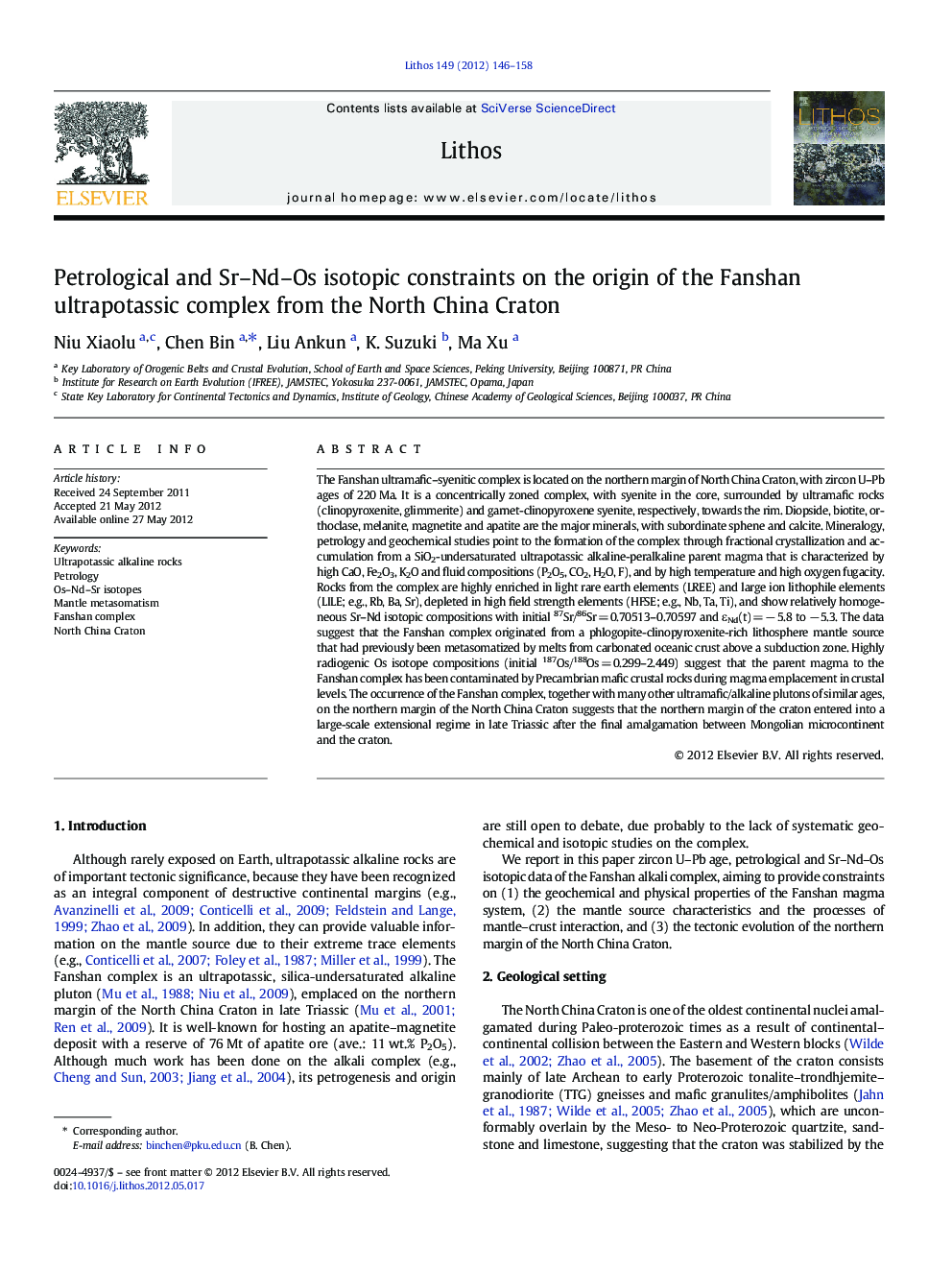| کد مقاله | کد نشریه | سال انتشار | مقاله انگلیسی | نسخه تمام متن |
|---|---|---|---|---|
| 4716584 | 1638704 | 2012 | 13 صفحه PDF | دانلود رایگان |

The Fanshan ultramafic–syenitic complex is located on the northern margin of North China Craton, with zircon U–Pb ages of 220 Ma. It is a concentrically zoned complex, with syenite in the core, surrounded by ultramafic rocks (clinopyroxenite, glimmerite) and garnet-clinopyroxene syenite, respectively, towards the rim. Diopside, biotite, orthoclase, melanite, magnetite and apatite are the major minerals, with subordinate sphene and calcite. Mineralogy, petrology and geochemical studies point to the formation of the complex through fractional crystallization and accumulation from a SiO2-undersaturated ultrapotassic alkaline-peralkaline parent magma that is characterized by high CaO, Fe2O3, K2O and fluid compositions (P2O5, CO2, H2O, F), and by high temperature and high oxygen fugacity. Rocks from the complex are highly enriched in light rare earth elements (LREE) and large ion lithophile elements (LILE; e.g., Rb, Ba, Sr), depleted in high field strength elements (HFSE; e.g., Nb, Ta, Ti), and show relatively homogeneous Sr–Nd isotopic compositions with initial 87Sr/86Sr = 0.70513–0.70597 and εNd(t) = − 5.8 to − 5.3. The data suggest that the Fanshan complex originated from a phlogopite-clinopyroxenite-rich lithosphere mantle source that had previously been metasomatized by melts from carbonated oceanic crust above a subduction zone. Highly radiogenic Os isotope compositions (initial 187Os/188Os = 0.299–2.449) suggest that the parent magma to the Fanshan complex has been contaminated by Precambrian mafic crustal rocks during magma emplacement in crustal levels. The occurrence of the Fanshan complex, together with many other ultramafic/alkaline plutons of similar ages, on the northern margin of the North China Craton suggests that the northern margin of the craton entered into a large-scale extensional regime in late Triassic after the final amalgamation between Mongolian microcontinent and the craton.
► The Fanshan complex is formed by fractional crystallization and accumulation.
► The parent magma is characterized by high CaO, K2O, and high fO2.
► The complex is highly enriched in LREE, LILEs, P2O5 and CO2.
► The complex originated from a phlogopite-clinopyroxenite-rich mantle source.
► The mantle source was metasomatized by melts from a carbonated oceanic crust.
Journal: Lithos - Volume 149, 15 September 2012, Pages 146–158